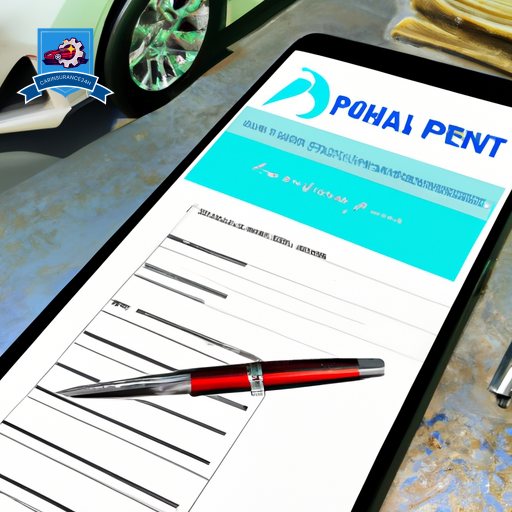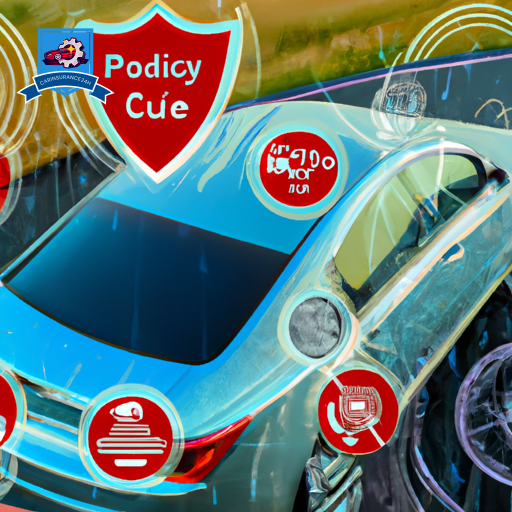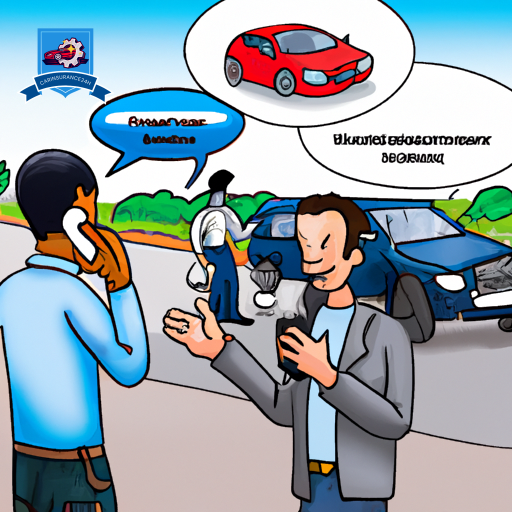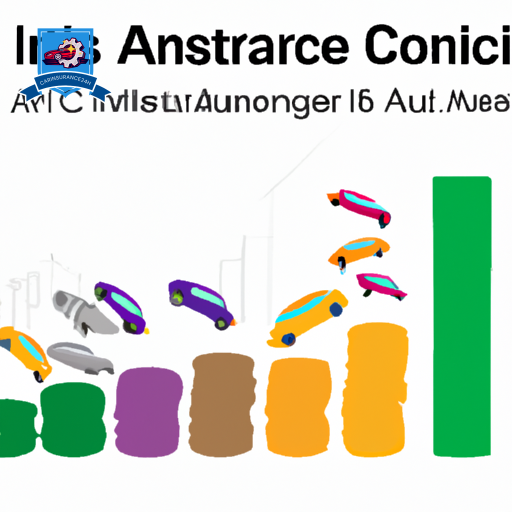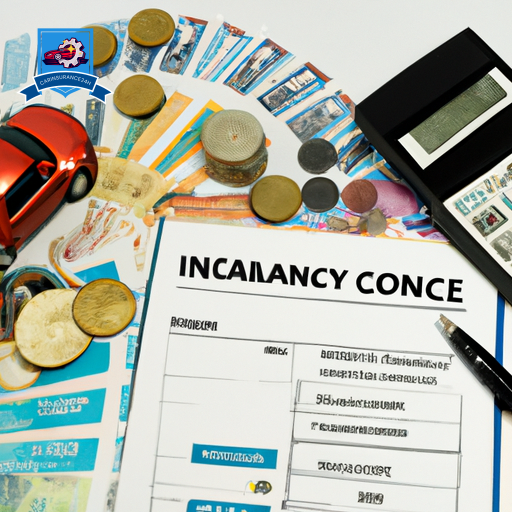Colliding with the challenges of collision insurance for teen drivers presents a multifaceted struggle, particularly when it comes to affordability. Given the statistically higher risks associated with younger, less experienced drivers, insurers often impose elevated premiums.
However, a strategic approach involving thorough comparison shopping, leveraging available discounts, and educating teens on the principles of safe driving can greatly mitigate these costs. Additionally, the consideration of higher deductibles and regular monitoring of coverage adjustments emerges as a prudent method to further economize.
This discourse aims to dissect these strategies meticulously, offering insights that could reveal potential avenues for securing economically viable collision insurance for teen drivers.
Understanding Collision Insurance

Collision insurance provides financial protection for your vehicle in the event of an accident involving another vehicle or object, regardless of who is at fault. This type of coverage is essential, particularly for teen drivers, who are statistically more likely to be involved in accidents. Understanding collision insurance, including collision types and policy exclusions, is critical for selecting the right coverage to safeguard against significant financial loss.
Collision insurance covers a range of collision types, including accidents with other vehicles, collisions with stationary objects like light poles or guardrails, and single-car accidents where the vehicle rolls or flips. This breadth of coverage ensures that in the diverse scenarios a driver might encounter, the financial impact of repairing or replacing the vehicle is mitigated. However, it’s important for policyholders to understand the specifics of their coverage, as policies may vary regarding deductibles and limits.
Policy exclusions are conditions under which the insurance will not cover the damage. Common exclusions include damage resulting from normal wear and tear, mechanical failures, and damage caused intentionally. Additionally, collisions occurring during illegal activities or with an unlisted driver at the wheel might also be excluded from coverage. Understanding these exclusions is critical to avoid unexpected out-of-pocket expenses in the event of an accident.
Assessing Teen Driver Risks
When evaluating insurance options for teen drivers, it’s important to understand the heightened risks they face on the road due to their inexperience and statistically higher likelihood of being involved in accidents. The assessment of these risks is essential for insurers to appropriately price premiums and for parents to understand the importance of selecting the right coverage.
Teen drivers are more vulnerable to making errors on the road for several reasons:
- Lack of Experience: Without years of driving under their belts, teen drivers may not react appropriately to road hazards or complex traffic situations.
- Overconfidence: This can lead to risky behaviors such as speeding, not maintaining a safe following distance, or attempting dangerous maneuvers.
- Susceptibility to Peer Pressure: Having friends in the car can distract the driver and encourage risky driving behaviors.
- Graduated Licensing Restrictions: While designed to mitigate risks by limiting exposure to high-risk situations, these restrictions highlight the inherent dangers associated with inexperienced drivers.
Understanding these risks helps in advocating for policies and practices that enhance safety. For instance, graduated licensing programs are important as they introduce young drivers to the road in phases, allowing them to gain experience gradually under less risky conditions. However, peer pressure remains a persistent challenge, underscoring the importance of continuous education about safe driving habits.
Comparison Shopping Strategies
To effectively find affordable collision insurance for teen drivers, it is important to employ comparison shopping strategies that scrutinize various insurers’ offers in detail. This approach not only highlights the diversity in premiums and coverage but also opens avenues for price negotiation, potentially leading to more budget-friendly options.
The first step in this meticulous process involves gathering quotes from a range of insurance companies. This can be efficiently done through online brokers, who streamline the comparison by presenting offers from multiple insurers side by side, allowing for easy evaluation of coverage aspects and price points.
Using online brokers also simplifies the initial screening process, filtering out insurers that might not cater specifically to teen drivers or those with unfavorable terms. Additionally, these platforms often provide tools that predict how varying deductibles and coverage limits impact the overall cost, aiding in a more informed decision-making process.
Once a shortlist of potential insurers is established, the next critical phase is price negotiation. Armed with comparative data, parents or guardians of teen drivers can engage in discussions with insurance agents, presenting evidence of lower quotes received elsewhere to leverage better deals. It’s essential to be prepared and well-informed during these negotiations, as understanding the specifics of each quote can significantly influence the outcome.
Discounts for Teen Drivers
Exploring discounts specifically tailored for teen drivers can greatly reduce the overall cost of collision insurance. Insurance companies often recognize the unique challenges and risks associated with insuring teen drivers. However, they also offer a variety of discounts that can make policies more affordable. When parents and teens work together, leveraging these discounts can lead to significant savings.
-
Important Student Discounts: Many insurance companies offer discounts to teen drivers who maintain a B average or higher in their academic studies. This discount is based on the premise that responsible students are likely to be responsible drivers.
-
Driver’s Education and Training Discounts: Completing a driver’s education course can not only better prepare a teen for the challenges of driving but can also qualify them for discounts on their collision insurance. This is a direct reflection of the insurance industry’s support for graduated licensing.
-
Safe Driving Programs: Some insurers provide discounts for teens who participate in safe driving programs or use apps that monitor driving habits. These programs encourage safe driving behaviors under parental guidance and often result in lower insurance premiums.
-
Multi-car and Multi-policy Discounts: Families that insure more than one vehicle, or hold multiple insurance policies (such as homeowners and auto) with the same company, can often receive discounts. This can be an effective way for families to save on collision insurance for their teen drivers.
Incorporating these discounts requires proactive efforts from both parents and teens. Parental guidance plays an important role in guiding teens through the process of graduated licensing and in ensuring that they meet the criteria necessary to qualify for these discounts.
Educating Teens on Safe Driving
Educating teens on safe driving is a critical step in fostering responsible and cautious road behavior, ultimately leading to reduced collision risks and insurance costs. Implementing structured programs that incorporate advanced driving simulators and peer influence can greatly enhance the learning experience, ensuring young drivers are better equipped to navigate the roads safely. Driving simulators, in particular, offer a risk-free environment for teens to practice and understand the consequences of dangerous driving behaviors without the real-world dangers. Leveraging peer influence by integrating group learning sessions can encourage teens to adopt safer driving practices, as they often value the opinions and behaviors of their peers.
The table below outlines key components of an effective teen driving education program:
| Component | Description | Benefit |
|---|---|---|
| Driving Simulators | Utilizes technology to simulate real driving scenarios, allowing practice in a safe environment | Enhances reaction times and decision-making under pressure |
| Peer Influence | Incorporates group learning to leverage positive peer pressure | Promotes safer driving habits among teens |
| Educational Workshops | Provides detailed knowledge on road safety, laws, and vehicle maintenance | Builds a solid foundation of safe driving principles |
Opting for Higher Deductibles
Choosing higher deductibles can vastly reduce the premium costs for collision insurance, offering an immediate financial benefit to policyholders.
However, this decision necessitates a careful analysis of the potential risks versus savings to guarantee it aligns with the financial situation and risk tolerance of the teen driver and their family.
Additionally, the importance of maintaining an adequate emergency fund becomes paramount, as it provides a safety net to cover the higher out-of-pocket expenses in the event of an accident.
Lower Premiums Benefit
One effective strategy to reduce insurance premiums for teen drivers is opting for higher deductibles, which can greatly lower monthly costs. This approach not only makes collision insurance more affordable but also encourages responsible driving habits. By understanding the direct impact of their actions on insurance costs, teens might adopt safer driving practices. Additionally, this method offers flexible payment options, allowing families to manage their budgets more efficiently.
The benefits of choosing higher deductibles include:
- Lower Monthly Premiums: Greatly reduces the cost of insurance each month.
- Encourages Safer Driving: Associates financial incentives with cautious driving.
- Flexible Payment Options: Provides families with more control over their insurance expenses.
- Personalized Coverage: Allows for customization based on the teen’s driving habits and the family’s financial situation.
Risk Vs. Savings Analysis
While higher deductibles can greatly reduce monthly premiums for teen drivers, it is imperative to weigh these savings against the potential risks involved. Opting for a higher deductible means that, in the event of an accident, the out-of-pocket expenses could be significant before insurance coverage kicks in. This decision should not only be influenced by the immediate financial relief but also consider the teen’s driving habits and legal requirements.
| Consideration | Impact |
|---|---|
| Driving Habits | May increase risk of high out-of-pocket costs |
| Legal Requirements | Must align with minimum coverage laws |
| Financial Savings | Lower monthly premiums |
| Potential Risks | Higher expenses during claims |
This analysis is essential in making an informed decision that balances cost savings with practical risk management.
Emergency Fund Importance
Establishing a robust emergency fund becomes imperative when opting for higher deductibles in collision insurance for teen drivers, as it safeguards against potential financial strain following an accident. This approach necessitates strategic financial planning to guarantee readiness for unforeseen expenses. Consider the following steps to fortify your emergency savings:
-
Set Clear Savings Goals: Determine a specific amount to aim for, based on the deductible and potential incidentals.
-
Regular Savings Contributions: Allocate a portion of monthly income directly into the emergency fund.
-
Explore Investment Strategies: Grow the fund through low-risk investments to outpace inflation.
-
Monitor and Adjust: Regularly review and adjust your savings plan to stay aligned with evolving financial situations and insurance requirements.
This structured approach ensures preparedness, aligning with prudent personal finance principles and effective risk management strategies.
Monitoring and Adjusting Coverage
As teen drivers gain more experience, it becomes imperative to periodically evaluate their collision insurance coverage to guarantee it remains cost-effective and adequate.
Usage-based insurance offers tangible benefits by aligning premiums with actual driving behavior, potentially lowering costs for responsible teen drivers.
Additionally, exploring policy discounts specifically designed for teens can further enhance the affordability of their collision insurance.
Evaluate Coverage Annually
To guarantee prime protection and cost-efficiency, evaluating and potentially adjusting your teen driver’s collision insurance coverage on an annual basis is imperative. This process not only assures that the coverage meets the current needs but also prevents unnecessary expenses. Here are key steps in this evaluation:
-
Review Policy Details: Make sure that all information is up-to-date to avoid policy cancellation or accusations of insurance fraud.
-
Assess Vehicle Value: As the car depreciates, you might need less coverage.
-
Consider Driving Behavior: Any change in your teen’s driving habits could affect coverage needs.
-
Check for Discounts: Always look for new discounts for which your teen may now qualify.
Regularly adjusting your policy in accordance with these factors will maintain prime coverage and cost-effectiveness.
Usage-Based Insurance Benefits
Evaluating and adjusting your teen’s collision insurance coverage annually lays a foundation for exploring the benefits of usage-based insurance, which offers a tailored approach to monitoring and adapting coverage.
This model, driven by telematics technology, collects data on driving behavior, such as speed, braking patterns, and time spent on the road. It allows insurers to customize policies more accurately to the individual’s risk level, potentially leading to more appropriate coverage options.
However, the use of telematics raises privacy concerns, as it involves sharing detailed driving data with insurance companies. Consumers must weigh the benefits of potentially lower premiums and personalized coverage against the implications of such data collection and use, ensuring they make informed decisions about their teen’s collision insurance.
Policy Discounts for Teens
In the domain of collision insurance for teen drivers, policy discounts emerge as a critical measure for parents seeking to monitor and adjust coverage effectively. Recognizing the importance of affordability and safety, insurance companies offer several incentives that reward responsible behavior and the acquisition of driving experience.
Key strategies include:
-
Graduated Licensing: Encourages teens to progress through various levels of driving privileges, reducing the insurer’s risk and often leading to lower premiums.
-
Completion of Online Courses: Teens who engage in approved defensive driving or safety courses online may become eligible for discounts.
-
Good Student Discounts: Rewards academic achievement with lower rates, underlining the correlation between responsible students and responsible driving.
-
Safe Driving Apps: Utilization of monitoring apps can demonstrate safe driving habits, leading to potential discounts.
These measures not only foster safer driving habits but also make collision insurance more accessible for teen drivers and their families.
Frequently Asked Questions
What Are the Legal Implications if a Teen Driver Is Involved in a Collision Without Adequate Insurance Coverage?
A teen involved in a collision without adequate insurance may face significant legal consequences, including parental responsibility for damages and potential accusations of insurance frauds. Ensuring proper coverage is critical to avoid these severe implications.
How Does the Introduction of Autonomous Safety Features in Modern Cars Affect the Cost of Collision Insurance for Teen Drivers?
The introduction of autonomous safety features in modern vehicles can lead to adjustments in collision insurance costs. Insurers may offer safety discounts, yet technology premiums might increase, reflecting the higher repair costs associated with advanced systems.
Can a Teen Driver’s Academic Performance Influence Their Collision Insurance Rates, and if So, How?
Yes, a teen driver’s academic performance can influence their collision insurance rates. Insurers often offer Good Student Discounts, recognizing academic excellence as indicative of responsible behavior. Statistically, students maintaining a B average may receive a discount of up to 15%.
How Does the Geographic Location of the Teen Driver Impact Collision Insurance Costs, Particularly in Urban Vs. Rural Areas?
Geographic location notably influences collision insurance costs, with urban areas typically incurring higher rates due to increased traffic density and potential for accidents. Conversely, rural areas may see lower rates, albeit potentially affected by weather patterns.
In the Event of a Collision, What Are the Steps for Filing a Claim for Teen Drivers, and How Does It Differ From Adult Drivers, if at All?
When filing a claim, both teen and adult drivers must submit thorough claim documentation. However, teens may access unique insurance discounts, potentially altering the process. Steps include notifying the insurer, documentation, and claim submission.


